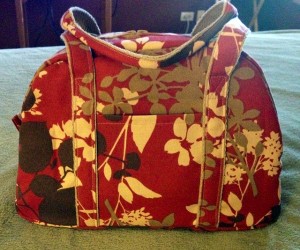This article originally appeared at i711.com on June 29, 2006, and was updated on August 28, 2013.
On the first day of my American Sign Language (ASL) class years ago, I found it puzzling that many of the students signed with their mouths shut in a tight, horizontal line, with not one natural movement. This was a level two class, so these students weren’t new to the language. I asked each of the students who their ASL I teacher had been. It turns out that this teacher—who was deaf and from a deaf family—had told them that they were to never move their mouths when signing, not even for descriptions (CHA, OO, et cetera). It took me the rest of the semester to undo this.
As someone who teaches from time to time, I’m always fascinated by those who believe they can teach ASL but are sorely unqualified. I taught my first ASL class when I was 18, and I shudder to think of my lack of teaching skills back then. I had absolutely no formal training in the language, other than having signed all of my life. Even though two people in that class have gone on to become top-notch interpreters, I cringe at how I conducted class back then. Over years, with age and experience, I’ve come to see that the requirements of teaching any language are, in a nutshell: fluency, attitude, teaching skills and experience (and that spells out FATE, I know).
Fluency is a must for teaching any language. Many of us have horror stories of people—deaf or hearing—who think they’re fluent enough to teach ASL. In 2005, an interpreter came to my doctor’s appointment. She was outfitted in jeans and a hooded sweatshirt jacket, hardly proper attire for an interpreter. Her signing skills were mediocre, but I was so sick that I only cared about getting medicine from the doctor. After some polite chatting, she asked if I would be part of a panel for the advanced ASL class she taught. I asked her to repeat, to make sure I understood right; this woman—obviously not fluent in the language—was teaching ASL to hearing people who trusted her to be fluent? She said, “It’d be great to have you; we have a panel about deafness every year and this is the first time I’ve been able to find a deaf person.”
The consequences of someone not so fluent in ASL teaching the language are far-reaching: future teachers and community members have to retrain these students, if possible. The students then go out into the world mistakenly thinking they’re fluent and go on to maybe interpret or teach deaf children. Then deaf children or consumers deal with mediocre signing skills… and then the students are puzzled by why they get criticized if their teachers said they were fluent. And so on.
Then there’s attitude. This is critical; attitude can make or break the learning process. The teacher has to love the language and be willing to share what he knows. The teacher has to really embrace teaching. And he has to be open to new ideas, since language is always changing. It doesn’t matter if the teacher’s relatives are deaf, if he is deaf or hearing, or if he is astoundingly fluent in the language. It’s a no-brainer; attitude is what motivates students to come to class.
Next is the issue of teaching skills. So many signers think they can teach the language because they’re fluent in it and have a good attitude. What often happens is that the teachers come to class, teach vocabulary from a book and then administer tests. Nothing more. That’s a recipe for failure. ASL programs need to have a curriculum in place, with a strong support system. At one ASL program I taught in, I had no curriculum to work from, nor did I have any supplemental materials other than the textbooks I was given.
The next semester, I started teaching at a different college and was blown away by its resources. There were four file cabinets, four drawers each, with materials for each week of each course, at each level of ASL. The support system at this college, along with the incredible leadership of the program coordinator, taught me more than I could have ever learned in any other program. This is why I think training workshops like those offered by the Signing Naturally creators are so essential. Workshops like this teach a curriculum that emphasizes language and culture, rather than just vocabulary.
Finally, there’s experience. What this refers to is the Deaf experience. In a discussion on this topic, ASL instructor John Pirone of Massachusetts pointed out that if two candidates — one Deaf, one hearing — possessed each of these components, the Deaf teacher likely would be more qualified. This is because the Deaf teacher has the “Deaf experience”–that is, s/he lives life as a Deaf person, and is more likely to teach the language’s and community’s nuances that even the most culturally-knowledgeable hearing teacher cannot.
Learning a language, obviously, is also learning the culture, boundaries, and the nuances of the community that uses the language. I’m not really saying anything new here, but it still amazes me how many people lack the FATE components of teaching. It’s important to recognize just how much impact ASL teachers have so upon the community at large, often more than they’re given credit for.
The local ASL teacher at the high school here, who is a CODA, has hundreds of students in her ASL classes each year, so it’s only natural to assume that the impact she has upon deaf people here is minimal given the volume of her work. The opposite is true: even with this sheer number of students, the impact she’s had upon the community is phenomenal. I go to the food store, restaurants, gas stations, even the car dealership, and people there sign because they took her class. This is why it’s so crucial to ensure that an ASL teacher has all of the FATE components. Such ASL teachers make this country become just a bit more harmonious.
Copyrighted material, used by permission. This article can not be copied, reproduced, or redistributed without the written consent of the author.


